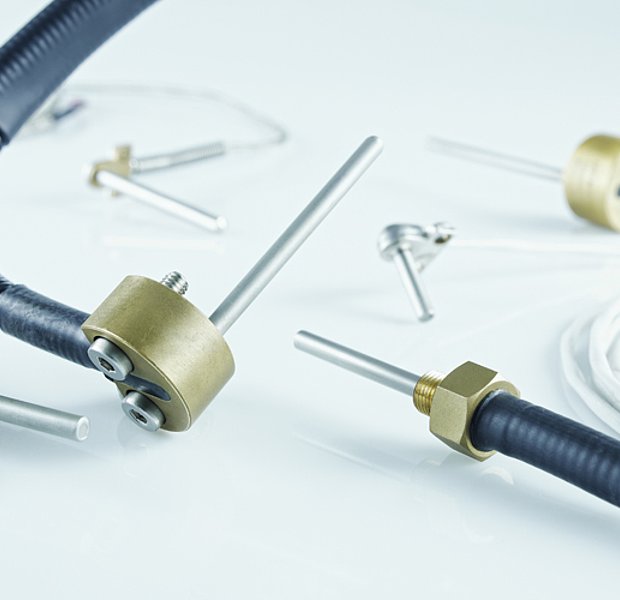
Temperature sensors rail
EPHYMESS temperature sensors are used all over the world in high-speed trains, cargo and regional trains, metros and trams, as well as hybrid buses and fuel cell trains.
Technical information on temperature sensors for rail
General
Temperature monitoring of rail vehicles puts high demands on the sensors regarding their mechanical stability. Extremely high air speeds and environmental influences in the underfloor area subject the sensors to increased vibrations and impact. The pressure differences when a rail vehicle enters and leaves a tunnel at high speed in particular cause enormous mechanical strain on the sensors used. The components developed by EPHYMESS are designed for these operating conditions. The rail sensors developed especially for the high-speed segment, which include both temperature sensors and speed sensors, work reliably even at speeds of more than 350 km/h.
Use
The temperature sensors are used worldwide in high-speed trains, cargo and regional trains, metros, trams, and hybrid buses. They serve to monitor the temperature of drive motors, gears and wheelset bearings. The sensors are connected in a wire harness for use, ideally with the EPHYMESS speed sensor, which is responsible for recording the speed and direction of travel.
Operating principle
Temperature sensors for rail vehicles are produced according to customer requirements. Each sensor consists of the housing with measuring transducer, a cable connection, the cable screw connection and, if applicable, a plug connection. Solid and highly vibration-resistant brass housings in various versions are used for the housing. The cable connection port is available in any angle from 90 to 180 degrees. The stainless steel protective pipe designs have a diameter of Ø 5 mm to Ø 12 mm and a length of up to 250 mm. The size and position of the fastening holes are adjusted accordingly. Single or double Pt100/Pt1000 chip sensors in 2, 3 or 4 wire circuits are used as standard.
The cable connection is responsible for the transmission of the sensor signals and is the most important link between the sensors and plug connections. Due to the tough conditions in the underfloor area of rail vehicles, the cables must be able to withstand extreme requirements. EPHYMESS therefore uses screened special hose lines that fully meet the requirements regarding mechanical, chemical and thermal stability. They usually consist of a silicone-free, halogen-free, 4 wire, screened hose line with an operating temperature range of -40°C ... +150°C. The cable connections are resistant to stone chipping, cleaning fluids, salt, alkali and other external influences. Plastic, metal corrugated tube or rubber fabric hoses offer additional mechanical protection.
Cable ducts and cable screw connections form a single system together with the plug connections and the connected line. All components are precisely coordinated with one another and guarantee reliable long-term operation. The cable screw connection is adapted to the respective project, depending on the connection of the shield or the number of connected lines. The modular system is designed such that only standardised cable screw-in housing is used. Only the sealing insert is adapted to the respective project.
The plug connections form the sensor systems interface to further components and allow easy, problem-free connection of the sensor technology to the analysis units. Standard plug connections from various manufacturers are used (as requested by customers). Adapted to the specific requirements and the measuring signals to be transmitted, they are produced in a sealed design. Variants with isolating plugs enable short cable lengths with direct cable laying on and through the housing. When system plugs are used, the number of plug components and individual parts is reduced as the lines are guided together. This reduces the required assembly and maintenance work.
When selecting the right components, high standards are demanded for safe operation, low construction effort, low vulnerability to malfunction and high availability. EPHYMESS temperature sensors for rail vehicles combine all these criteria and can be put together in a large number of combinations.